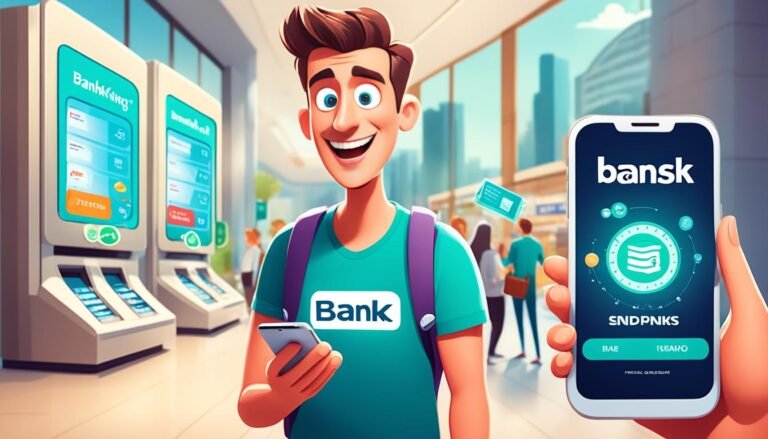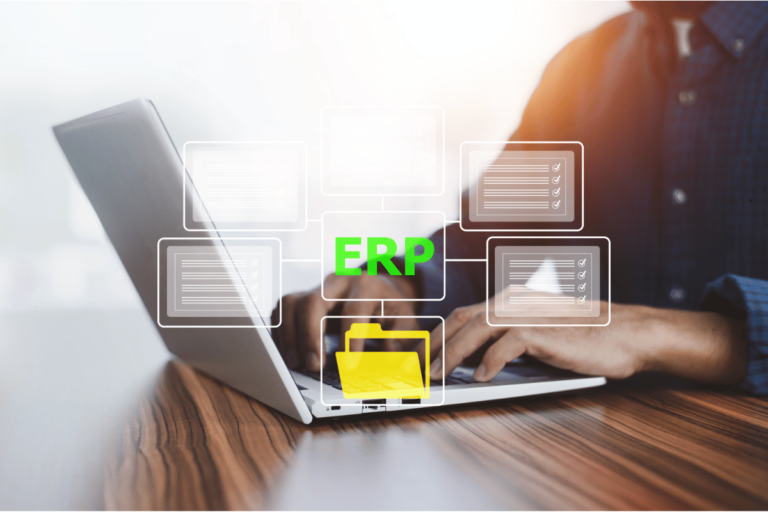Cybersecurity Wars: How Hackers Target Your Bank Account (And How to Fight Back)
In the digital world, a huge 95% of Americans worry about their financial data’s safety. This worry comes as cybersecurity battles grow, with hackers finding new ways to steal bank info. The war might be online, but the losses are real. It’s important for everyone to learn and fight against these cyber threats.
Hackers operate in the shadows, often unnoticed until it’s too late. They target not just big companies but also individual bank accounts. This new war puts your money at risk. Knowing about it and taking action is how you defend yourself.
To protect our money in digital banking, we need more than strong passwords. Being watchful and using advanced security can help stop these attacks. By knowing about online dangers and following expert advice, we can fight back effectively.
Key Takeaways
- Understanding the tactics used by hackers is critical in the fight to protect your bank account.
- Financial institutions and individuals must be proactive to stay ahead in the cybersecurity wars.
- Multifactor authentication is a key tool in defending against unauthorized access to banking systems.
- Regularly updating security practices in response to evolving cyber threats is essential for financial security.
- Becoming knowledgeable about phishing and smishing techniques can prevent personal data from being compromised.
- Network protection strategies and best practices in information security are non-negotiable for safeguarding finances.
The Evolution of Cyber Threats and Their Impact on Financial Security
The digital world keeps changing as new cyber threats appear, hitting financial security hard. We need to really understand how these threats grow to protect our money well. In the past, cybercriminals used simple viruses. Now, they use advanced ransomware to attack our financial systems.
Today’s cyber threats are not just about stealing data. They also use advanced tactics and phishing to trick people and banks. These attacks harm not just our wallets but also our trust in the financial system. To keep our financial security safe, we and banks must stay alert and upgrade our tech defenses.
We must look closely at the threats aimed at our money to fight back. This table shows the main cyber threats and how they threaten our financial security.
| Type of Threat | Description | Impact on Financial Security |
|---|---|---|
| Phishing Scams | Attempts to steal sensitive information via deceptive emails or communications. | Raises the chance of unauthorized money moves and data breaches. |
| Ransomware | Malware that locks data or systems until ransom is paid. | Leads to big money losses and messes up financial services. |
| Man-in-the-Middle Attacks | Intercepts communication to steal or change data. | Messes with secure financial transactions. |
| Distributed Denial of Service (DDoS) | Overloads a network to stop operations with too much traffic. | Causes financial service breakdowns, hurting availability and trust. |
| ATM Skimming | Devices on ATMs that steal card data illegally. | Leads to direct theft and possible wide fraud. |
With digital money and more online banking, we face new risks. Even one hacker can shake up important financial systems, affecting markets worldwide.
In today’s digital money world, making financial security stronger is key. Customers and banks must work together to fight modern cyber threats. Being informed and ready is our main shield against cyber attacks.
Understanding the Landscape of Cyberwarfare
Cyberwarfare isn’t just about stealing personal info. It’s a vast field where countries and groups use digital attacks. These actions can impact the future of how we fight wars online. This is particularly true for financial institutions, which are key to world economies.
What is Cyberwarfare?
Cyberwarfare is when countries attack each other’s digital spaces to cause disruption. They might target important systems, military bases, or banks to get ahead. These cyber battles can shake up financial markets and threaten national security. That’s why understanding and defending against them is so crucial.
Examples of Cyber Attacks on Financial Institutions
Financial institutions face many cyber threats, from phishing to full-scale system breaches. The attack on Bangladesh Bank shows just how far hackers can go. It highlights the need for strong security measures.
The Cyber Arms Race Between Nations
Nations are always trying to improve their cyber defenses, leading to a race in technology. This race pushes countries to develop better cyber security and espionage tools. They aim to defend themselves from complex attacks and spying efforts.
| Cyber Attack Type | Financial Institution Targeted | Estimated Damage |
|---|---|---|
| Distributed Denial of Service (DDoS) | Major Banks | Millions in service disruptions |
| ATM Malware | Global ATMs | Loss of millions in cash |
| Wire Transfer Fraud | Regional Credit Unions | Thousands to millions in fraudulent transfers |
| Data Breach | Investment Firms | Compromise of sensitive client data |
Beyond the Password: Multifactor Authentication for Banking Security
Banking security needs more than just passwords today. Multifactor authentication (MFA) plays a key role in enhancing banking security. Passwords alone can’t guard our sensitive financial data anymore.
MFA boosts security by asking for two or more proofs before giving access. These proofs can be something you know, something you have, or something you are. Together, they form a strong defense against cyber threats.
- Passwords alone can’t fight off hackers, who use many tricks to break in.
- MFA requires something physical, like a phone, which a thief probably won’t have.
- Your unique traits, like fingerprints, add a personal layer of protection.
MFA is essential for banking security because our financial information is very tempting to thieves. It gives customers confidence that even skilled hackers can’t easily access their accounts.
“Multifactor Authentication is not just an additional step to the login process; it’s a significant leap towards securing financial freedom against cyber threats.” – (source from a security expert)
Let’s look at how MFA makes a difference in banking:
| Banking Activity | Safety with Passwords | Enhanced Security with MFA |
|---|---|---|
| Accessing Online Banking | Vulnerable to theft and data breaches | Secured by an additional authentication factor |
| Validating Transactions | Limited traceability and verification | Transactional integrity with two-step verification |
| Withdrawing from ATMs | Card and PIN can be duplicated or stolen | Additional biometric verification enhances safety |
Even though adding steps to log in might seem like a hassle, MFA strengthens banking security. As technology improves, MFA will get easier to use, offering greater security with less effort.
Adopting multifactor authentication is becoming crucial. As cyber threats grow, our protection must become stronger too. MFA helps banks and their customers stop unauthorized access and safeguard their finances.
“Smishing” and “Phishing”: The Invisible Hooks in Your Inbox
Digital communication is a big part of our lives now. Phishing and smishing have become major cyber threats. These scams trick us into giving away personal info. Phishing is done through fake emails, and smishing through harmful texts.
Knowing about these dangers is key. Look for urgent messages that want you to act fast, odd email or phone numbers, and requests for your info. Yet, as con artists evolve, we must stay sharp and informed.
Let’s learn how to spot and avoid these scams. Here are some tips to help you:
- Always check if the sender’s email or phone number is real.
- Hover over links to see where they really go before clicking.
- Question messages that push you to act quickly out of fear.
- Watch for typos and mistakes that seem unprofessional.
Also, protect your info with these actions:
- Install the latest security updates to fight against these scams.
- Create strong, different passwords for all your accounts.
- Use two-factor authentication for an extra security step.
- Check your bank and card statements for strange charges.
Adding these habits and tips to our daily routine is essential. As we deal with phishing and smishing, keeping a safe inbox is vital. It helps us protect our digital life.
Cybersecurity
In our digital age, cybersecurity is vital for keeping money safe. It’s key to use strong network protection and information security. This part talks about ways to protect your cash online.
Network Protection Strategies for Your Finances
Guarding your money means being smart about network protection. This mix includes both tech and smart habits. A good firewall keeps out unwanted access. Plus, always use secure Wi-Fi for money matters.
Consider these extra steps too:
- Use VPNs for better online privacy and security.
- Keep your devices updated to close security gaps.
- Watch network activity for signs of trouble.
Information Security Best Practices
Staying safe also means being alert. Best practices guide us in safeguarding our data.
Here are key tips for data safety:
- Always update your software to fix security bugs.
- Create strong, different passwords for banking sites. A password manager can help.
- Use two-factor authentication for extra security.
- Encrypt important files, especially on USBs.
- Regularly back up your data to a safe place.
Using these cybersecurity methods reduces the chance of losing money online. Be ahead of threats by staying informed and ready.
Corporate vs. Consumer: Different Battlefields in the War on Cybercrime
In the world of cybercrime, it’s important to know the different threats to companies and consumers. Consumer cybersecurity mostly aims to protect personal info and prevent fraud. On the other hand, corporate cybersecurity tackles larger, more complex challenges. A strong corporate account breach can shake the whole business world, showing how deep these incidents can hit.
Understanding Corporate Account Takeover (CATO)
A CATO is when outsiders get control of a company’s online spaces, leading to money loss and stolen data. This type of cybercrime shows how complex attacks have become, needing a deep understanding of threats and corporate weak spots.
The Greater Risks of Business Account Compromises
Business account attacks typically involve more money and data than those aimed at individuals. This fact highlights the urgent need for strong security steps and quick defensive action to protect a company’s assets.
| Aspect | Corporate Cybersecurity | Consumer Cybersecurity |
|---|---|---|
| Focus | Protecting enterprise data and assets | Guarding personal information and finances |
| Common Threats | CATO, Advanced Persistent Threats (APTs), Insider Threats | Identity theft, Phishing, Malware |
| Consequence Scale | Can affect global operations and multiple parties | Tends to be individual or family-centric |
| Response Complexity | Requires coordinated response across departments | Often managed by individuals or with bank assistance |
| Regulatory Burden | Heavier due to industry standards and compliance | Less regulated but still guided by consumer protection laws |
The difference in fighting cyber threats between companies and consumers is clear. Companies not only protect their own assets but also those of their customers and partners. For them, strong cybersecurity is a must. It’s crucial for keeping trust, stability, and the ability to grow in our digital world.
How Cybersecurity Meets Physical Security in Banking
The concept of security in the banking industry has greatly changed because of technology. Now, cybersecurity and physical security together protect the financial sector from many threats. Banks use sophisticated cybersecurity to keep digital assets safe. At the same time, they make sure their buildings and infrastructure are secure.
Think about how ATMs show the blend of these two aspects. Each ATM is a physical spot for customers but also connects to the bank’s digital network. To stop attacks, banks need strategies that cover both areas. They use encryption and firewalls online and also have cameras, access controls, and alarms for their physical locations.
This dual approach is key for a reason. If attackers break into the physical equipment, they might access the bank’s digital network. And if there’s a cyber attack, it could make physical security systems less effective. This shows why banking professionals must work together to face threats to both cybersecurity and physical security.
“Safeguarding our customers’ assets requires an ever-vigilant eye on both the cyber and physical planes. One cannot be prioritized over the other; they are co-dependent shields against potential breaches.”
Banking security is complex and includes many different measures to stay safe. As criminals get smarter, banks also have to upgrade their defenses. This means keeping the cyber world and physical places like vaults and ATMs secure.
The Role of Artificial Intelligence in Advancing Digital Defense
In the world of cybersecurity, artificial intelligence (AI) plays a key role. It’s a powerful ally in the fight for digital defense. By using cutting-edge AI in security plans, businesses can stop cyber attacks before they start.
AI changes how surveillance systems work. It can quickly go through huge amounts of data to find potential threats early. AI’s ability to predict attacks helps catch dangers before they occur, much faster than old ways.
Artificial intelligence is the cornerstone of next-generation digital defense, transforming reactive security measures into preemptive shields against cyber threats.
- Real-time Threat Detection: AI systems monitor network traffic as it happens. They spot odd patterns that may mean a security problem.
- Automated Response Protocols: When AI finds a threat, it can respond right away to reduce harm.
- Continuous Learning: AI algorithms learn over time. They get better at spotting and dealing with new cyber dangers.
Adding AI to digital defense systems has its challenges. This includes making sure data is used ethically and AI decisions are transparent. The table below shows how AI improves cybersecurity compared to traditional methods:
| Traditional Cybersecurity | AI-Enhanced Cybersecurity |
|---|---|
| Manual threat detection | Automated real-time threat identification |
| Delayed response time | Instantaneous automated responses |
| Limited to known threats | Adaptive to new, unknown cyber threats |
| Dependent on human intervention | Less need for people to step in |
| Static security protocols | Security that changes and improves over time |
Looking ahead, it’s clear that artificial intelligence must be part of digital defense plans. Cybersecurity experts need to focus on AI to stay ahead of complex online threats.
Adopting a Proactive Stance: Cybersecurity Training and Employee Vigilance
In today’s office, digital dangers are just as serious as physical ones. We can’t just sit and wait for online attacks. Instead, employee vigilance and proactive cybersecurity training are key. They help build a strong cyber secure culture within companies. This isn’t a one-time thing but a continuing effort that changes with the threats. The core of this culture is educating employees continually. This ensures everyone is ready to protect the company from cyber breaches.
Developing a Cyber Secure Culture Within Organizations
Creating a cyber secure culture means more than just adding technology. It’s about shaping how people think and act. Companies need to see cybersecurity as a fundamental value, woven into all business parts. Offering regular training, keeping staff updated on threats, and keeping communication open are essential. This creates a culture where everyone knows the importance of guarding online assets.
Real-World Training Scenarios and Cyber Drills
To really be ready, companies must let employees experience real-world training scenarios. These mimic the stress of an actual cyber attack. Using hands-on cybersecurity training helps employees practice responding to threats like phishing, ransomware, or data breaches. Cyber drills let companies check if their cybersecurity plans work, making employees more alert and prepared.
| Training Component | Description | Benefits |
|---|---|---|
| Interactive Workshops | Engaging sessions that cover a range of cybersecurity topics and encourage employee participation. | Boosts retention of security protocols and fosters a team-based approach to cyber defense. |
| Phishing Simulations | Controlled phishing attacks that test employees’ ability to recognize and react to suspicious emails. | Increases awareness and reduces the likelihood of employees falling prey to real phishing attempts. |
| Response Drills | Simulated cyber incidents that require employees to act quickly and follow incident response plans. | Prepares employees for actual events and helps to refine and improve response strategies. |
Integrating these components into a company’s culture empowers employees. They become vigilant against cyber threats. This makes them the first defense line in protecting their online world.
The Insider Threat: When the Enemy Is Within
An often overlooked aspect of cybersecurity is the insider threat. This danger comes not from outside hackers but from within an organization. Employees or contractors with bad intentions can be a big risk. They can help with insider-assisted breaches. To address these risks, we need a good plan for access management, watching employees, and following security rules.
Mitigating Risks of Insider-Assisted Breaches
To lower the risks of insider-assisted breaches, companies are taking tough steps. They do regular checks to find risks, teach employees about security, and set up strong controls. Here are important ways to stop insider threats:
- Comprehensive background checks for new hires and periodic reassessments for current employees
- Least privilege policy, where access rights are limited to the essential functions of the job role
- Separation of duties to ensure that no single individual has control over all aspects of any critical operation
Monitoring and Managing Access to Sensitive Information
Having a good access management system is key to protecting sensitive info. Using advanced tools that watch how users behave and access data is important. It also helps to create a workplace where everyone is aware of security. Staff are encouraged to report anything odd.
| Access Management Solution | Functionality | Benefits |
|---|---|---|
| User and Entity Behavior Analytics (UEBA) | Monitors user data and activity for deviations from established patterns | Early detection of potential insider threats |
| Privileged Access Management (PAM) | Controls and monitors privileged user access | Limits risk of unauthorized access to critical systems |
| Data Loss Prevention (DLP) | Inspects and controls data transfer to prevent data breaches | Stops the unauthorized sharing of sensitive info |
In summary, dealing with insider threats needs constant attention, good access management strategies, and a dedication to security. Firms must focus on finding and stopping insider-assisted breaches. This is vital to protect their assets and keep trust in the digital age.
Implementing a Layered Defense: The Key to Thwarting Hackers
To protect against hackers, a well-built layered defense is key. It uses many security steps at different levels. It’s crucial to strengthen your digital defenses with vulnerability management and network segmentation. Also, having a good incident response strategy is vital.
Vulnerability Management and Network Segmentation
The first step to a strong defense is active vulnerability management. By finding and fixing security weaknesses regularly, organizations can stop attacks before they happen. Along with this, network segmentation is important. It splits the network into separate parts to control access and limit the spread of any breach.
| Segment | Characteristics | Security Protocols |
|---|---|---|
| Core Data Center | Contains sensitive company data | Strict access controls, monitoring, encryption |
| User Network | Used for day-to-day operations | Firewall rules, antivirus protection |
| Guest Network | Provides limited access for visitors | Isolated from the rest of the network, minimal privileges |
Responding to Incidents: The Importance of an Effective Strategy
An incident response strategy is like a playbook for unexpected events. It’s a plan for reacting fast and effectively when there’s a cyberattack. This ensures the least damage and a quick return to normal.
Important parts of this strategy include:
- Immediate detection and containment to stop the attack from spreading
- Thorough investigation to understand the extent and source of the breach
- Communication protocols to notify stakeholders and potentially affected parties
- Recovery measures to restore lost or compromised data
- Post-incident analysis to learn from the event and prevent future occurrences
By carefully improving each defense line, organizations can protect their assets from hackers. The real power of layered defense is in its constant improvement and blending into a solid cybersecurity plan.
Conclusion
The internet is like a battlefield, especially when it comes to our bank accounts. This article showed the ways hackers attack and how we can defend our money. Knowing how to protect our money online is just the beginning. We need to stay alert always.
Keeping our bank accounts safe is a job for everyone. We’ve looked at different threats, from simple scams to big attacks on companies. Tools like two-step verification and being careful about who has access to our accounts help a lot. Adding layers of protection makes it harder for hackers.
In the end, it’s up to all of us to stand against hackers. Being lazy about our online safety is not an option. We talked about setting up better security and the importance of being aware. Together, we can fight the dangers online. So let’s start today, making our online world a safer place for everyone.







